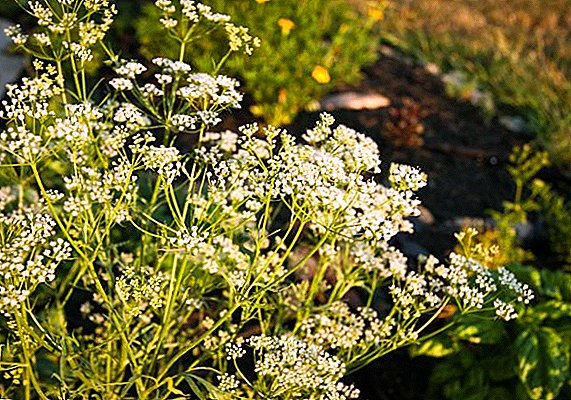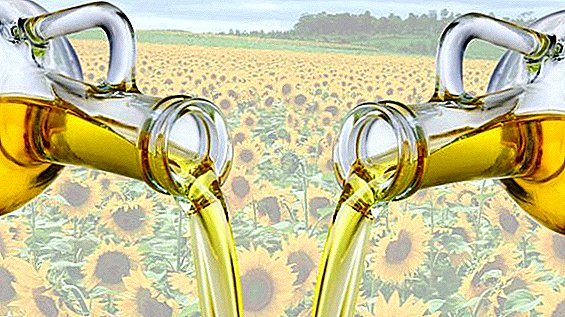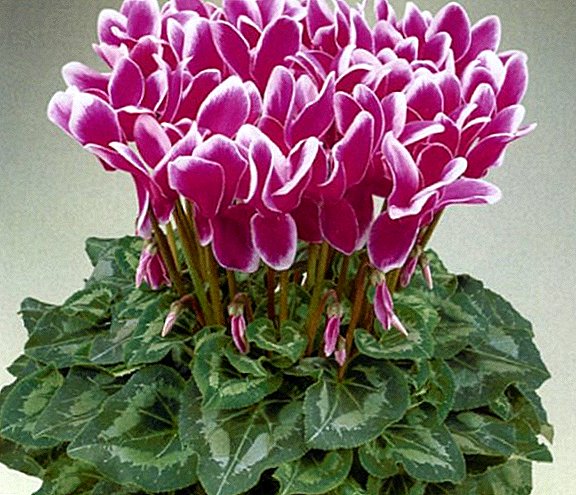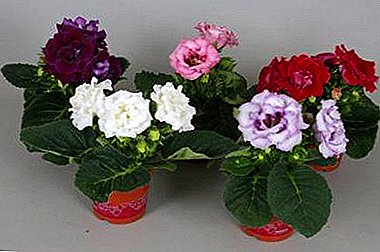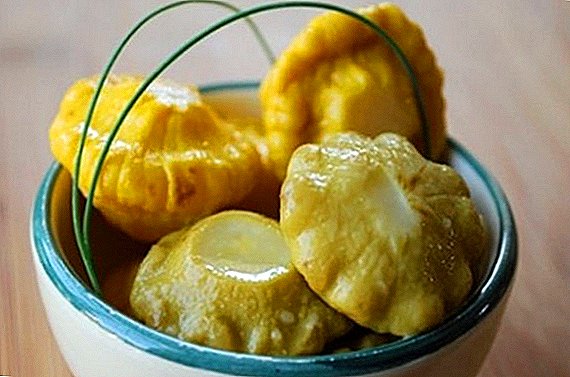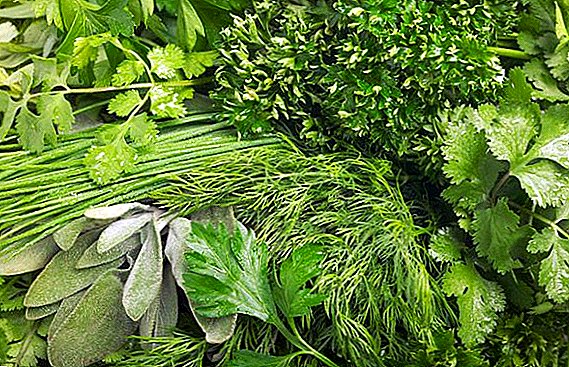 Greens give taste and aroma to our dishes. So that spicy herbs are present on your table not only in summer, do not be lazy to make preparations for the winter! In addition, harvesting fresh organic herbs for the winter will allow you to abandon plants grown with the use of nitrates and save you money. Any method of harvesting involves the use of both one type of greenery and the collection of herbs. There is no such storage method that can completely preserve the aroma and texture of fresh herbs, but there are some methods that will work better than others. Use any method convenient for you!
Greens give taste and aroma to our dishes. So that spicy herbs are present on your table not only in summer, do not be lazy to make preparations for the winter! In addition, harvesting fresh organic herbs for the winter will allow you to abandon plants grown with the use of nitrates and save you money. Any method of harvesting involves the use of both one type of greenery and the collection of herbs. There is no such storage method that can completely preserve the aroma and texture of fresh herbs, but there are some methods that will work better than others. Use any method convenient for you!
When to collect spicy herbs for storage
 Spicy herbs should be harvested shortly before flowering. During this period they are very tender, fluffy and contain the greatest amount of essential oil. This is due to the fact that at the time of the budding of the plant all its forces are directed to the creation of a flower and a seed. After flowering, most herbs lose their flavor or become bitter. The best time of day to harvest herbs is early in the morning when the morning dew evaporates, or towards evening. It is necessary to collect herbs only in good dry weather. Try not to wash the greens, otherwise the essential oils will be lost. Many herbs, especially parsley, green onions, mint and oregano, can be periodically harvested for fresh use.
Spicy herbs should be harvested shortly before flowering. During this period they are very tender, fluffy and contain the greatest amount of essential oil. This is due to the fact that at the time of the budding of the plant all its forces are directed to the creation of a flower and a seed. After flowering, most herbs lose their flavor or become bitter. The best time of day to harvest herbs is early in the morning when the morning dew evaporates, or towards evening. It is necessary to collect herbs only in good dry weather. Try not to wash the greens, otherwise the essential oils will be lost. Many herbs, especially parsley, green onions, mint and oregano, can be periodically harvested for fresh use.
Important! Do not lose the harvest of the garden! If the plant is an annual, cut it in the soil line. However, if it is perennial greens, do not cut more than half of the stem - this ensures re-flowering of greens. However, there are some exceptions to this rule. Many species of the mint family (including lemon balm) grow more efficiently if all the stems are cut immediately below the root.The following are the most frequently grown herbs and the optimal time for their collection:
- parsley - after ripe leaves appear (at any time of the year);
- cilantro - twigs can be harvested after the stems have reached 8 to 12 cm in height;
- oregano (basil): the best harvest time is midsummer;
- rosemary can be collected at any time of the year;
- sage - in the first year of growth only slightly harvested, in the second growing season and in the future - harvested all year round and at any time;
- mint, lemon balm, thyme - at any time of the year, preferably just before flowering;
- dill, fennel, coriander and cumin - when the pods begin to change color;
- lavender, chamomile, tarragon - these are flowering plants, they must be collected before the flower fully opens, preferably in early July;
- roots of crops such as ginseng and chicory should be dug in late summer or early fall.
Features of drying greens
 Air drying is one of the most popular and easiest ways to preserve green in winter. But this method is also the longest. Spicy herbs keep their oils, taste and quality relatively well. This method works best on low-moisture herbs: dill, marjoram, oregano, rosemary, savory, sage and thyme. To preserve the best flavor of these herbs, you need to allow them to dry naturally.
Air drying is one of the most popular and easiest ways to preserve green in winter. But this method is also the longest. Spicy herbs keep their oils, taste and quality relatively well. This method works best on low-moisture herbs: dill, marjoram, oregano, rosemary, savory, sage and thyme. To preserve the best flavor of these herbs, you need to allow them to dry naturally.
Important! Drying in the sun, in the oven or in the microwave oven may seem convenient and fast way (alternatively). But this is not recommended; use tmethods only as a last resort. This method of drying reduces the oil content and aroma of herbs, as the herbs lose too much taste and color.How to dry greens for the winterOption One:
- Remove the lower leaves near the trunk, as well as all dry, yellowed or spotted diseased leaves.
- If you collected herbs in your own garden and are confident in their purity, you can simply gently shake off the excess soil and remove insects.
- If necessary, gently rinse each sprig in cold water and dry thoroughly with a soft towel. Ensure that the herbs have good air circulation so that they can dry quickly. Wet greens will rot.
- Next you need to tie the greens into small loose bunches of 3-4 branches, tie a rubber band or thread and hang upside down in a dark, well-ventilated room, protected from light, dust and foreign odors. Bundles will shrink as they dry, and the gum may loosen. Therefore, periodically check that the greens do not slide off.
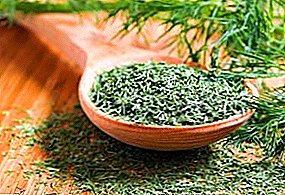 Every day, examine the grass for signs of mold or insect pests (spiders). If necessary, remove the unusable leaves. Discard all dried herbs that show the slightest signs of mold. It is better to adapt the construction in your kitchen in order not to forget to periodically monitor the drying process.
Every day, examine the grass for signs of mold or insect pests (spiders). If necessary, remove the unusable leaves. Discard all dried herbs that show the slightest signs of mold. It is better to adapt the construction in your kitchen in order not to forget to periodically monitor the drying process.- Drying will take 2-3 weeks, depending on where you live, a humid climate will take much longer.
The second option. If you do not have a place to hang greens, or for any other reason, the first option of drying does not suit you - use the following, no less effective technology of drying greens:
- Simply separate the leaves from the stalks. Select only good healthy leaves.
- Spread the leaves in a single layer on white paper or on a paper towel. And it is better to prepare in advance a special surface for drying: a wooden lattice covered with gauze; pull the fabric or mesh onto the frame; use a strainer.
- Let the leaves dry in the air over the coming weeks.
Did you know? It is believed that dried herbs can be stored for two to three years, but in fact they should be used throughout the year. Their further consumption in food will not be as tasty and enjoyable. Herbs will lose their color and flavor.
The fastest and most profitable way - freezing herbs
 Drying greens is a good way, but it is not always effective and is not suitable for plants with a high moisture content. Greens will be covered with mold before they have time to dry. To preserve herbs such as basil, chives, lemon balm, peppermint and tarragon, fresh freezing is best. Frozen herbs will retain their essential oils. The aroma will also be maximally preserved, unlike dry herbs, where the smell becomes more concentrated.
Drying greens is a good way, but it is not always effective and is not suitable for plants with a high moisture content. Greens will be covered with mold before they have time to dry. To preserve herbs such as basil, chives, lemon balm, peppermint and tarragon, fresh freezing is best. Frozen herbs will retain their essential oils. The aroma will also be maximally preserved, unlike dry herbs, where the smell becomes more concentrated.
Did you know? Frozen herbs can be used in the same proportion as fresh greens. Herbs harvested for the winter in any other way do not have such a positive feature. For example, withthe weathered herbs are more concentrated than fresh greens. Instead of a tablespoon of fresh greens anduse about 1 teaspoon of dried herbs.
Normal freeze
Dill, green onions, mint, basil, oregano, sage, savory, tarragon and thyme - all these cultures have a fine structure and freeze well. Conventional freezing preserves herbs for up to six months and does not require much effort; This is an easy and fast process:
- If necessary, wash the greens, separate the leaves from the stems (chop the green onions) and let them dry or dry with a paper towel. To achieve absolute dryness is not necessary.
- Lay the leaves in a single layer on a baking sheet and place in the freezer. Herbs are frozen overnight.
- Then place the frozen leaves in any airtight plastic container or airtight bag.
- Return the herbs to the freezer and store them for later use. After such freezing the leaves will not stick together.
- Use the greens for several months before its appearance begins to deteriorate.
Important! Never forget to tag your containers. After processing, especially after freezing, herbs can look very similar and even have similar flavors. Therefore, be sure to label and date each container.
Cubes
For longer storage of fresh herbs by freezing, freezing in ice cubes is great. How do you manage to keep the greens for the winter in simple ice cubes? The freezing process:
- Rinse greens if necessary. Drying is not necessary.
- Greens must first be blanched: keep in boiling water for about a minute. Then cool and slice.
- Half fill the ice cube tray with water. Instead of water, you can use any broth.
- Try to put chopped greens in water. Greens will emerge, but in the future we will fix it. Place the half-filled tray in the freezer.
- The next day, you need to pour water into the tray so that the water covers all the greens.
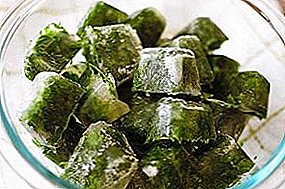 Return the tray back to the freezer to freeze its contents to a solid state.
Return the tray back to the freezer to freeze its contents to a solid state.- Transfer the finished cubes to an airtight container or bag and store in the freezer for two weeks.
- Cubes are ready to use. Throw them in your favorite hot dishes.
Important! Do not use metal or glassware for freezing cubes. Do not let the cubes melt before use - immediately add them to the cooking dishes.
Frosting herbs in oil
Another great way to store herbs is to make a paste by mixing herbs with oil, which can then be frozen in ice cube trays. This method reduces wilting and preserves the aromas of spicy herbs much better. Basil, thyme, parsley and sage are usually harvested in this way. For freezing use vegetable (olive) or butter. So, place the chopped greens in the ice cube tray and cover with a little oil. All containers must be dry.
 If you have a lot of greens, put whole leaves in a food processor or blender, add a few tablespoons of oil and finely chop. Transfer this mixture to an ice cube tray and freeze. Frost will take one night. Transfer cubes to an airtight container or bag for long-term storage. Use cubes as needed, adding to all dishes where you used fresh greens before. Frozen butter cubes melt much faster than equivalent sized ice cubes. The method of freezing herbs for the winter can make many wonderful recipes. Here is one of them: mix the butter with chopped parsley and chopped garlic - in combination with black bread you get a surprisingly tasty and flavorful snack.
If you have a lot of greens, put whole leaves in a food processor or blender, add a few tablespoons of oil and finely chop. Transfer this mixture to an ice cube tray and freeze. Frost will take one night. Transfer cubes to an airtight container or bag for long-term storage. Use cubes as needed, adding to all dishes where you used fresh greens before. Frozen butter cubes melt much faster than equivalent sized ice cubes. The method of freezing herbs for the winter can make many wonderful recipes. Here is one of them: mix the butter with chopped parsley and chopped garlic - in combination with black bread you get a surprisingly tasty and flavorful snack.
Important! Be sure to remember that the green should not be a drop of water when it is added to the oil. Otherwise, you risk getting a bacterial infection.
Harvesting greens with salt
 An old-fashioned method of storing herbs is harvesting herbs for the winter with salt. This method is suitable for the preservation of herbs such as basil, rosemary, tarragon, marjoram and thyme, but it can also taste good with sweeter herbs. Salt retains herbs well for long term use. In addition, a mixture of salt and herbs can be used in cooking as a seasoning. Salt can be coarse sea or ordinary cooking. The main proportions of salt and herbs are as follows: 200 g of salt per 1 kg of green mass. Use clay or glass containers. The process of harvesting salted greens for the winter:
An old-fashioned method of storing herbs is harvesting herbs for the winter with salt. This method is suitable for the preservation of herbs such as basil, rosemary, tarragon, marjoram and thyme, but it can also taste good with sweeter herbs. Salt retains herbs well for long term use. In addition, a mixture of salt and herbs can be used in cooking as a seasoning. Salt can be coarse sea or ordinary cooking. The main proportions of salt and herbs are as follows: 200 g of salt per 1 kg of green mass. Use clay or glass containers. The process of harvesting salted greens for the winter:
- At the bottom of the tank evenly pour a layer of salt (2 tbsp. L).
- Add a thin layer of your fresh herbs, and then another 2 tbsp. l salt. Thus, alternately fill the container with layers of salt and fresh greens until the vessel is full. Layers must be tightly tamped.
- The top layer should be completely covered with salt.
- Tightly close the container and allow the aromas to infuse for 4 weeks.
How to use the oil for harvesting
Herbal oil is the best way to impress your guests. This oil is easy to prepare. In addition, you have the opportunity to demonstrate their success as a skilled gardener.
Herbal oil
 There are significant differences between "herbs" and "spices", which are often used interchangeably. Herbs are obtained from the leaves of herbaceous or non-woody plants and are used in smaller quantities than spices. Spices are derived from roots, flowers, fruits, seeds, or bark and are usually used in smaller quantities. Herbal oils are, in other words, oils seasoned with fresh herbs. Herbal oils are used in various forms; The range of their application is very extensive. Herbal oils not only add flavor and texture to dishes, but also are sources of antioxidants, vitamins, minerals and have unique healing properties. Essential oils are used in aromatherapy and for massaging the skin.
There are significant differences between "herbs" and "spices", which are often used interchangeably. Herbs are obtained from the leaves of herbaceous or non-woody plants and are used in smaller quantities than spices. Spices are derived from roots, flowers, fruits, seeds, or bark and are usually used in smaller quantities. Herbal oils are, in other words, oils seasoned with fresh herbs. Herbal oils are used in various forms; The range of their application is very extensive. Herbal oils not only add flavor and texture to dishes, but also are sources of antioxidants, vitamins, minerals and have unique healing properties. Essential oils are used in aromatherapy and for massaging the skin.
Essential oils require a large amount of plant material. They must be diluted before use, as they have a very rich composition and flavor. Herbal oil anyone can make at home. It is better to do them in advance, then the grass flavor is better absorbed into the oil. You can store this oil in the refrigerator for a month, and in the freezer - up to three months.
Herbal oil infusion
Infused oils are herbal-based oil tinctures. In the process of infusion, the cells with the aromatic substance are destroyed, and the essential oil of the plant goes into solution. Oil extracts on herbs are nothing but enrichment of vegetable oils (olive, sunflower and others) with the properties of various plants. It is possible to make oil infusions both from fresh, and from dry vegetable herbs and their gatherings. The following herbs are well suited for oil infusions: basil, cilantro, dill, mint, marjoram, oregano, rosemary, savory, tarragon, thyme. Flavored oils are easy to prepare; The required cooking time is about 2 hours.
Cooking process:
- Wash your fresh herbs and let them dry completely.
- Prepare beautiful glass jars or other containers.
- Place the herbs in the jars. You do not need a large number of herbs. One or two branches will be enough.
- Heat the oil separately on low heat until warm.
- Pour the oil into the jars.
- Allow the contents to cool thoroughly.
- Close jars tightly with lids.
- Set aside the infusion containers for about one week before using in a cool place away from direct sunlight.
Important! Always work with clean, dry herbs and sterilized containers. Homemade oils should be used for a maximum of two months.
Canning greens
 Canning is an outlet for those who for one reason or another cannot dry or freeze greens for the winter. Canned herbs can be stored in any convenient place and at any temperature. However, with this method in green less vitamins are saved. Consider the process of harvesting herbs for the winter on the example of specific recipes. Herbs such as dill, parsley, fennel, green lettuce are well suited for canning. Products for canning greens: 1 kg of greens, 1 liter of water, 100 g of salt. Preparation of lightly salted greens: collect the herbs of your choice, put in jars. Fill the greenery with boiling brine, soak for 2-3 days at a temperature of 20-25 ° C. Cork jars with green lids and store in a cool place.
Canning is an outlet for those who for one reason or another cannot dry or freeze greens for the winter. Canned herbs can be stored in any convenient place and at any temperature. However, with this method in green less vitamins are saved. Consider the process of harvesting herbs for the winter on the example of specific recipes. Herbs such as dill, parsley, fennel, green lettuce are well suited for canning. Products for canning greens: 1 kg of greens, 1 liter of water, 100 g of salt. Preparation of lightly salted greens: collect the herbs of your choice, put in jars. Fill the greenery with boiling brine, soak for 2-3 days at a temperature of 20-25 ° C. Cork jars with green lids and store in a cool place.
Also consider the process of canning greens on the example of pickling asparagus. Asparagus is a perennial wild plant; Only young shoots are collected. Asparagus is immediately sorted: very short, curved and broken shoots are separated, and damaged, darkened parts are cut out. Then the asparagus is thoroughly washed in cold water. Next, keeping the tops of each shoot, cut pieces up to 10 cm in length and stack vertically in standard glass jars. When canning, asparagus retains a fairly delicate texture and high taste.
As you can see, there are many reliable ways of harvesting, which for a long time will retain the high quality and taste of your greenery. With pleasure do your own harvesting of greens and herbs for the winter - and you can enjoy the aromas of greenery all year round!


 Every day, examine the grass for signs of mold or insect pests (spiders). If necessary, remove the unusable leaves. Discard all dried herbs that show the slightest signs of mold. It is better to adapt the construction in your kitchen in order not to forget to periodically monitor the drying process.
Every day, examine the grass for signs of mold or insect pests (spiders). If necessary, remove the unusable leaves. Discard all dried herbs that show the slightest signs of mold. It is better to adapt the construction in your kitchen in order not to forget to periodically monitor the drying process. Return the tray back to the freezer to freeze its contents to a solid state.
Return the tray back to the freezer to freeze its contents to a solid state.